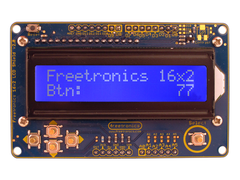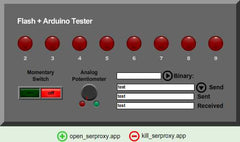Although making a mood light with RGB LEDs, or embedding them inside a candle has been done, Kapil Gupta has gone all out and described how to make your own candle, then embed the electronics required for a remote-controlled RGB LED based around the Arduino platform. This is a great idea as the entire candle can glow nicely instead of just the sharp LED light, for example:
And with some forethought and clever coding, all sorts of effects are possible with the LED and could be changed with the TV remote control. To get started with your own, visit Kapil's instructions here. And remember to take care when making your own candles. Furthermore, we're on twitter and Google+, so follow us for news and product updates as well.

If you're looking to make your own RGB LED projects, consider the Freetronics RGBLED: full colour module. It includes a bright RGB LED on the top of the board and a WS2801 constant-current, addressable, multi-channel LED driver on the back. This smart module can be daisy-chained, so you can connect a number of these together in a string and drive each of the module colours individually from your microcontroller. For more information and to order, visit the product page.
























